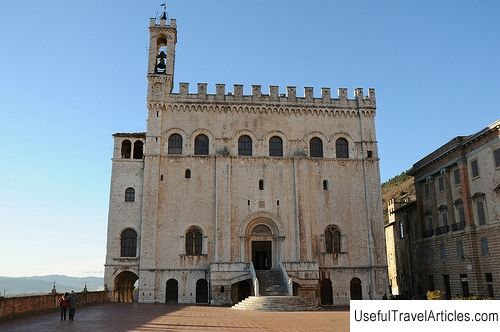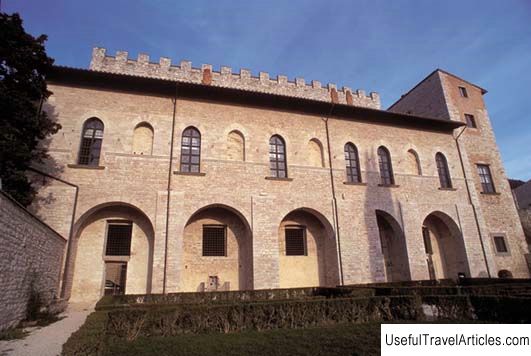Palazzo dei Consoli description and photos - Italy: Gubbio
Rating: 8,5/10 (1243 votes) 
Palazzo dei Consoli description and photos - Italy: Gubbio. Detailed information about the attraction. Description, photographs and a map showing the nearest significant objects. The title in English is Palazzo dei Consoli. Photo and descriptionAn impressive architectural ensemble consisting of Palazzo dei Consoli, Palazzo Pretorio and the connecting square was built in Gubbio during the 14th century. As a result of discussions that took place in the years 1321-1322, it was decided that the buildings should be erected on a site that would connect all the city blocks. To implement this idea, it was necessary to radically change the landscape of the area - first of all, huge underground vaults were built, on which lies the square, which is considered today the largest "hanging" square in the world. The entire architectural complex, mainly built in 1332-1338, is made in a single style, reflecting the changes that took place in public life during the Renaissance. Matteo di Giovannello worked on the design of both palaces: Palazzo dei Consoli was conceived as the seat of the Magistrate of the independent commune of Gubbio, and Palazzo Pretorio as the seat of the podesta, the head of the city. And the creation of the amazing front door of the Palazzo dei Console is attributed to Angelo da Orvieto (his name can be seen above the portal). The palace itself is now considered one of the most beautiful public buildings in Italy. Four large buttresses divide the Palazzo facade overlooking the square into three parts. In the central part there is a fan-shaped staircase leading to the entrance, on either side of which you can see vaulted windows. The ground floor is decorated with arched windows with scalloped cornices, and at the top of the palace there are small pointed arches and Guelph merlons. To the left of the Palazzo there is a graceful crenellated bell tower - "Il Campanone", whose bells weighing about 2 tons date back to 1769. The other sides of the palace follow the shape of the facade, with the exception of the one that faces the valley - a narrow wing with a balcony was attached to it. Today, Palazzo dei Consoli is owned by the municipality. Its grand, vaulted main hall and rooms on the upper floors house the Civic Museum, whose collections introduce the history and culture of Gubbio from the 6th century BC. and up to the 19th century. Perhaps the main exhibit of the museum is the famous Iguvin tables - the most significant monument of the Umbrian language discovered in the 15th century. They are seven bronze tablets engraved in Umbrian with detailed descriptions of religious practices. In general, the archaeological collection of the Gubbio Museum is considered one of the richest in Umbria. In addition, you can see a numismatic collection with coins from the era of Ancient Rome and medieval coins, a collection of ceramics, which contains works of the 14-19 centuries, and a collection of works of art from the Umbrian school of painting.        We also recommend reading Naval Museum description and photo - Crimea: Balaklava Topic: Palazzo dei Consoli description and photos - Italy: Gubbio. |




